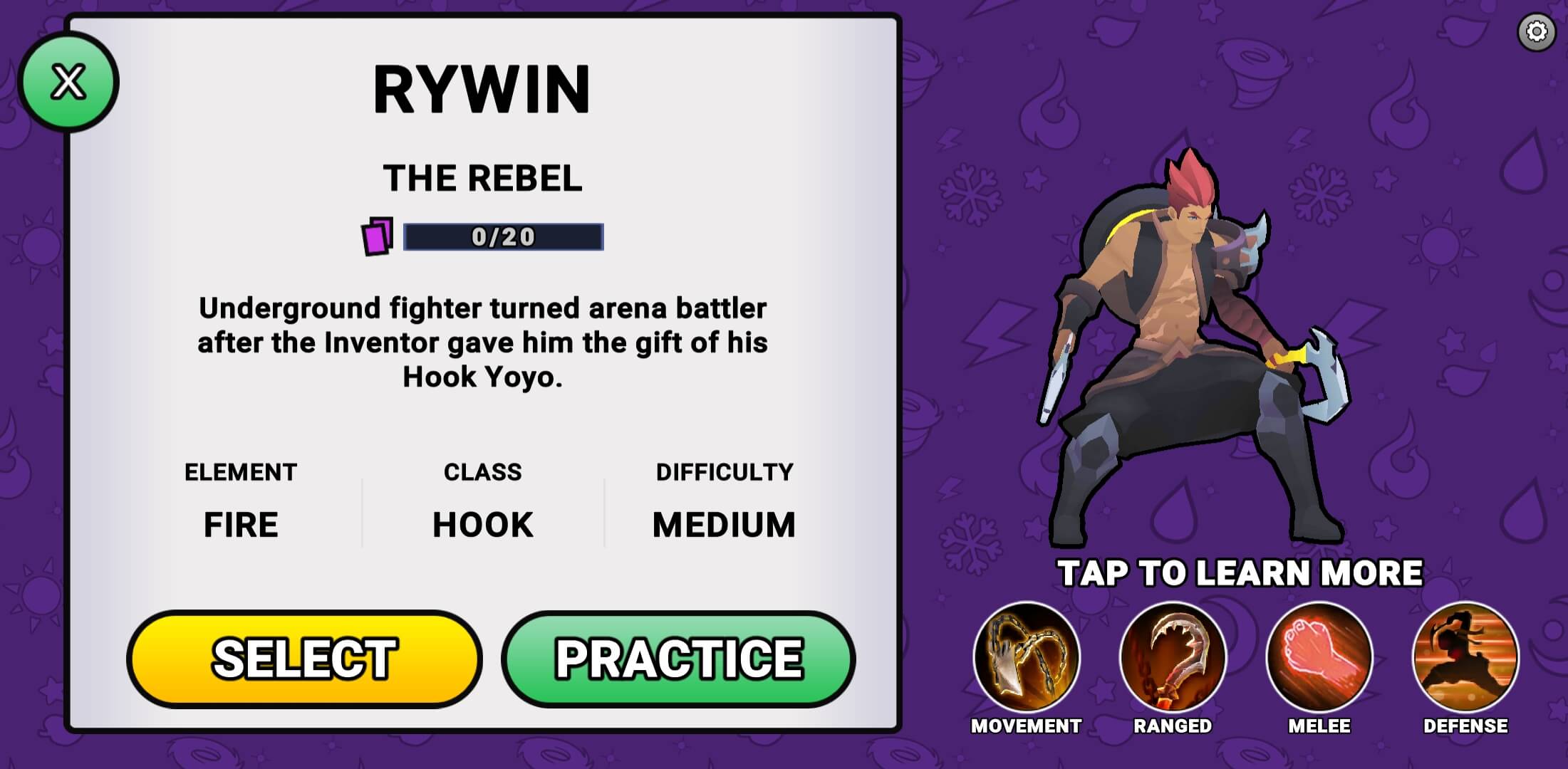Designing the Combat Meta in Element Arena

Version 1: The Ground Floor
In the midst of startup chaos, me and my co-founder Carter started simple in August 2017: run and shoot deadly fireballs on a shrinking island where last one standing wins. We took 2 weeks to create a throwaway prototype with multiplayer networking. Our goal was to understand if low time to kill combat, hazardous areas of the arena and virtual joysticks would be fun to play on mobile for ourselves.
We were impressed with the results, and luckily so were investors. There was nothing close to this on mobile. This was when Tencent's mobile version of League of Legends recently released in China. Almost a year before PUBG launched, and two years before Brawl Stars or Battlelands Royale were launched. We raised $1.2M from investors to build the game out.

Being new to mobile, we expected this wouldn't be enough gameplay itself to sustain a profitable release. In hindsight that was incorrect, but from a combat design perspective, much more interesting results followed:
Version 2: The 1 Character Fighting Game Meta
We aimed to take the meta of a fighting game like Smash Bros and simplify it for top-down combat on mobile. In Smash Bros, there are intransitive mechanics (rock-paper-scissors) between Grappling < Attacking < Shielding, and a multitude of movement choices to make the pacing and spacing vary. Our thesis was that we could achieve this with only 4 buttons: Fireball, Sword, Reflect Shield, and Dash.
Fireballs could be sent homing back to the caster if someone timed their reflect shield as it hit them. If someone had their shield up when they got hit by a sword, they would take double damage. Dash distance would vary depending on how long you held it. In this way, we achieved a Fireball > Sword > Reflect Shield meta which replicated a lot of fast-paced fighting games in a top-down, mobile friendly way.
We felt we were very close with this meta. In terms of useful actions per minute, it exceeded our final result for Element Arena. It was fun, but very chaotic and overdependent on reflections to make special moments.
One of our design pillars for the game was to avoid the need for team compositions and role selections (because it's harder to matchmake, and it makes it harder for a bystander to watch and deeply appreciate the action). This was part of our rationale for having only one combat kit. In the end we concluded to experiment with multiple playable kits with soft strengths and weaknesses to satisfy this design pillar. We had monetization and retention concerns from testing.
- The game is top-down and the characters were small on the screen. We were more confident in selling cosmetics of whole characters if they had meaningful different flavors than just buying items for a standard avatar.
- The depth of the combat system was insufficient for the depth of play and retention we needed. We had successfully simplified to something fun and skillful, but this wasn't sufficient to drive long-term mastery.
Version 3: Class-Based Fighting Game Meta
Having more than one class to play gives at minimum a linear increase to the time it takes to totally master the game (number of classes * average time to master one). At best, it exponentially increases the time it takes to master the game because you need to deeply understanding matchups, hidden mechanics, etc. That's the goal.
However, another design pillar for the game was that it should be easy and fun to watch--What You See Is What You Get. Each unique playable character introduces exponential burden to both new players and new spectators of the game. If you don't understand what you're seeing and how classes are interacting with each other then you don't know how to play or how to watch the game.
In a standard fighting game or MOBA, new characters are the lifeblood of their live operations and new releases. If they can't release new characters, they can't press the Get Money button they're dependent on. So new player burden creeps up over time. It wasn't too late for us though. We aimed to create a stable meta that was fun to play long-term while still being able to make money.
To accomplish a design that met our goals, I designed 6 of the 7 combat classes and a 'fair-to-play' gatcha monetization and progression system. There are only a few playable classes (which define the playstyle), but there are many collectable heroes with different elemental affinities and visual designs to collect. In this way we decoupled the combat playstyle, the hero visuals, and the pay for power boost from the elemental effects. This let us tune and pull all those levers independently.



There's a lot more to this, as we didn't even talk about game modes, but I hoped you enjoyed reading this write up! Here is the resulting combat in trailer form:
If you want to learn more about the creation of a particular combat kit, please see below:


